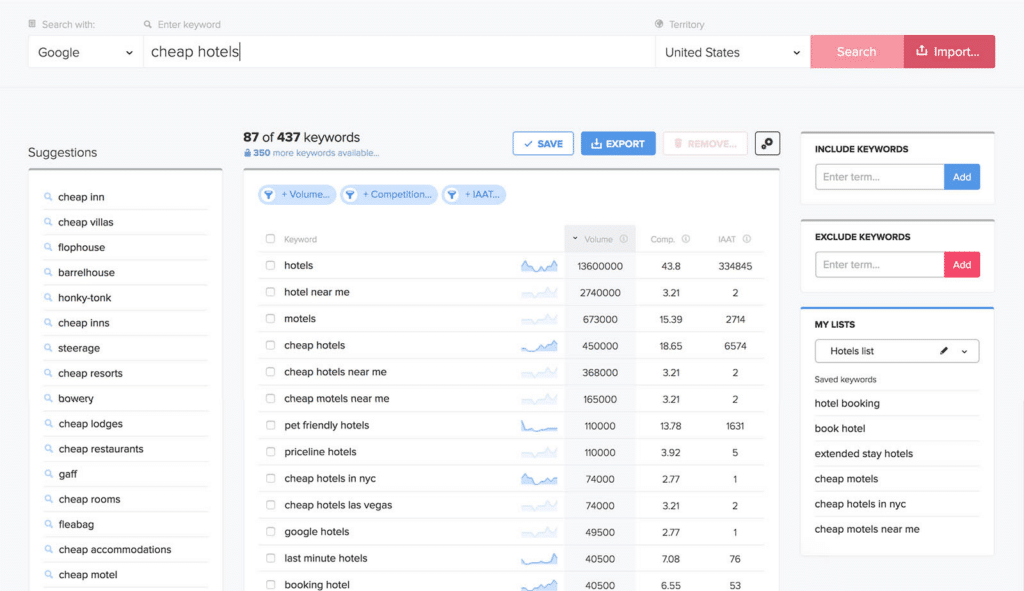Understanding and implementing Search Engine Optimization (SEO) is crucial for every online content creator, especially when it comes to crafting SEO-friendly blog posts.
Essentially, SEO encompasses methods used to enhance a website’s visibility and ranking on search engine results. A higher ranking increases the likelihood of users visiting the site.
Creating SEO-friendly blog posts is not merely about driving traffic; it’s about attracting relevant audiences likely to engage with your content or services, thereby boosting your blog’s effectiveness and reach.
What is an SEO-friendly Blog Post?
An SEO-friendly blog post is one that is designed and written in a way that helps it rank higher on search engine results pages (SERPs).

It’s not just about stuffing the post with keywords; it’s also about providing valuable and relevant content to the reader. An SEO-friendly blog post considers several factors, such as keywords, post structure, the quality and relevance of the content, and the use of links.
Know Your Audience
The first step in creating an SEO-friendly blog post is understanding your audience. Knowing who your readers are and what they’re interested in will help you create content that resonates with them. This will increase the chances of them engaging with your post and sharing it with others, which can help boost your SEO.
Keywords
The second factor to consider is the use of keywords. These are the words and phrases that users type into search engines when looking for information. Including relevant keywords in your blog post can help it appear in the search results when users search for those terms.
The Role of Content in SEO
Content plays a pivotal role in SEO. It’s the cornerstone of any SEO strategy and can significantly impact a website’s search engine ranking. High-quality, relevant content is more likely to be shared, linked to, and engaged with, all of which can boost your SEO.
What is High-Quality Content?
But what does high-quality content look like? High-quality content is:
- Accurate
- Informative
- Engaging
- Well-written
It’s content that addresses the reader’s questions or concerns and provides them with useful information. This type of content is more likely to be shared and linked to, which can help improve your SEO.
Moreover, content plays a crucial role in keyword optimization.
By incorporating relevant keywords into your content, you can make it easier for search engines to understand what your post is about and how it should be indexed. This can help your post appear in the search results when users search for those keywords.
The Basics of How to Blog for SEO
Blogging for SEO involves more than just writing a post and hoping it ranks on search engines. It requires a strategic approach and an understanding of how search engines work. Here are some basic steps to follow when blogging for SEO.
Keyword Research

First, you need to conduct keyword research. This involves finding the keywords that your target audience is likely to use when searching for information related to your post. These keywords should be incorporated into your post in a natural and meaningful way.
On-Page Optimization

Next, you should structure your post in a way that’s easy for both readers and search engines to understand. This involves using headings and subheadings, breaking the text into short paragraphs, and using bullet points or numbered lists where appropriate.
Create Quality Content

Lastly, you need to create high-quality, valuable content. This is perhaps the most important aspect of blogging for SEO. High-quality content is more likely to be shared, linked to, and engaged with, all of which can boost your SEO.
Step-by-step Guide
Creating an SEO-friendly blog post may seem daunting, but by following a step-by-step approach, the process can become much more manageable.
Here’s a simple guide to get you started:
- Start with keyword research. Identify the keywords your target audience is likely to use when searching for information related to your post.
- Create a blog post structure. This should include an engaging title, an introductory paragraph, several body paragraphs, and a conclusion. Each section should be clearly marked with headings and subheadings.
- Write the post. Incorporate your keywords naturally throughout the text. Remember to focus on creating high-quality, valuable content that provides information, answers questions, or solves problems for your readers.
- Optimize your post for SEO. This includes using your keywords in the title, headings, and meta description, linking to relevant internal and external resources, and ensuring your post is mobile-friendly.
- Review and publish your post. Before you hit publish, make sure to review your post for any errors or areas for improvement.
Tips for Keyword Research
Keyword research is a crucial part of creating an SEO-friendly blog post. It involves identifying the words and phrases your target audience is likely to use when searching for information related to your post.
Here are some tips to help you conduct effective keyword research:
Prospecting
First, start by brainstorming a list of potential keywords. Think about the topics your post covers and the questions it answers.
What words or phrases might your audience use when searching for this information?
Use Tools to Find More Keywords
Next, use a keyword research tool to expand your list and find related keywords. These tools can also provide valuable information about the popularity and competitiveness of your keywords.
High Volume, Low Difficulty
Finally, choose your keywords carefully. Opt for keywords that are relevant to your post, popular among your target audience, and not overly competitive.
How to Optimize Your Blog Content for SEO
Once you’ve written your blog post, the next step is to optimize it for SEO. This involves several steps:
- Use your keywords in the title, headings, and meta description.
- Linking to relevant internal and external resources.
- Ensuring your post is mobile-friendly.
The Title
The title of your blog post is one of the first things both readers and search engines see, so it’s important to make it count. Make sure to include your primary keyword and make the title engaging and descriptive.
- Pro tip: Keep the title below 9 words. Titles that are too long don’t show up on SERPs (Search Engine Result Pages) in their entirety.
H2s, H3s, and Other Subheadings
Your headings and subheadings should also include your keywords. They help break up the text and make it easier for both readers and search engines to understand what your post is about.
It’s important that your subheadings relate to each other. Think of it like an umbrella. The H2s relate to the H1, the H3s relate to their H2s, and so on.
- Pro tip: Only have ONE H1 title per page. Search engines place heavy importance on H1s. Having more than one H1 can confuse search engines, leading to lower rankings.
Internal and External Links
Linking to relevant internal and external resources can also boost your SEO. Internal links help search engines understand the structure of your website and can help boost the ranking of other pages on your site.
External links can help improve the credibility of your post and provide additional value to your readers.
Pro tip: Don’t internally link to content that’s trying to rank for the same keyword. This is called “content cannibalism.” Content cannibalism confuses search engines, causing them to penalize both articles.
The Role of Content Marketing in Blogging
Content marketing is a strategic approach focused on creating and distributing valuable, relevant, and consistent content to attract and retain a clearly defined audience.
In the context of blogging, content marketing involves creating high-quality blog posts that provide value to your readers and promote your brand or services.
Attention, Attention, Attention
Content marketing plays a crucial role in blogging. It helps attract and retain readers, boosts your credibility, and can even help convert readers into customers. By creating high-quality, valuable content, you can position yourself as a thought leader in your industry and build trust with your audience.
Moreover, content marketing can significantly boost your SEO. High-quality content is more likely to be shared, linked to, and engaged with, all of which can improve your search engine ranking.
Tools and Resources for Creating SEO-friendly Blog Posts
There are many tools and resources available that can help you create SEO-friendly blog posts. These include keyword research tools, SEO plugins, content creation tools, and SEO guides.
Keyword research tools, such as Google Keyword Planner or SEMrush, can help you find relevant keywords and provide valuable information about their popularity and competitiveness.
SEO plugins, like Yoast SEO, can help you optimize your blog posts for SEO by providing suggestions for improving your title, meta description, and keyword usage.
Content creation tools, like Grammarly or Hemingway Editor, can help you improve the quality of your writing and ensure your post is easy to read.
Finally, SEO guides and resources can provide valuable tips and advice for creating SEO-friendly blog posts. These include SEO blogs, online courses, and webinars.
The Impact of SEO on Your Blog’s Success
In conclusion, SEO can have a significant impact on the success of your blog. By creating SEO-friendly blog posts, you can increase your visibility on search engines, attract more relevant traffic, and boost your credibility.
This, in turn, can help you attract and retain more readers, increase your brand awareness, and even convert visitors into customers.
Remember, SEO is not a one-time task but an ongoing process. As search engine algorithms continue to evolve, it’s important to stay up-to-date with the latest SEO practices and continuously optimize your blog posts for SEO.
By understanding and implementing SEO practices in your blog posts, you can significantly boost your online presence and set your blog up for success.
Featured Image Credit: NisonCo PR and SEO; Unsplash


Recent Comments